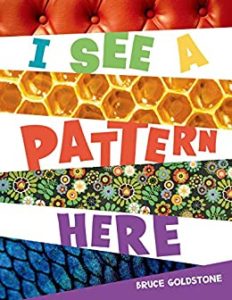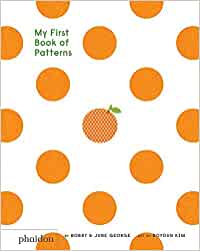An important part of our STEM curriculum at cefa is working with patterns. Understanding patterns is a foundational math skill. You can learn the importance of patterns in this article, or you can just dive straight to the fun part, which is the pattern games and activities.
Learning Opportunities
Children will learn STEM, especially in the area of mathematics. In this game, the greatest learning opportunities are in reasoning, comparison and prediction. As always, the use of mathematical vocabulary greatly enriches these activities. This activity also encourages your child to focus and stay on one task (increases attention span) which contributes to your child’s social and emotional development. Learning patterns can be very simple or very complex. You must always work on the difficulty level your child is comfortable with. Remember, there is all the time in the world to learn – don’t rush! If your game (and the time you spend with your child) is not fun, it’s not worth it.
Ideas for Patterning Activities
You can use anything for patterning, from apples to pebbles, so no investment is required for this activity. You will have to draw patterning cards for your child to follow if you make your own games at home or make a pattern for them first that they can either copy or continue, as shown in my examples below. For example, if you are making patterns with green apples, yellow apples and red apples, you will draw a pattern card that goes like this:
 You can have several patterns for your child, using the same apples:
You can have several patterns for your child, using the same apples:
 Simply adjust to the degree of difficulty that is required. You can start with simple patterns first (AB AB AB AB) then increase the level of difficulty but make sure you are not frustrating your child. This should still be fun and games, not drills. More difficult patterns to try can be AAB AAB AAB, or ABC ABC ABC, AABBC AABBC AABBC, but again, the important thing is that your child will learn to recognize the pattern in order to replicate it. If you make it too hard, your child will just copy and not really get all the important learning that the activity offers.
Simply adjust to the degree of difficulty that is required. You can start with simple patterns first (AB AB AB AB) then increase the level of difficulty but make sure you are not frustrating your child. This should still be fun and games, not drills. More difficult patterns to try can be AAB AAB AAB, or ABC ABC ABC, AABBC AABBC AABBC, but again, the important thing is that your child will learn to recognize the pattern in order to replicate it. If you make it too hard, your child will just copy and not really get all the important learning that the activity offers.
How do you know if your child understands the pattern? Simple! Just ask, as your child is continuing the pattern:
- How does this pattern go? (your child will show you: blue, white, blue, white, blue, and now comes white!)
- How do you know which piece comes next?
Or similar questions. Engage in dialogue, always.
Download the CEFA ice cream patterning worksheet to play at home.
If you have Lego at home, try using that. You can illustrate (using Lego) the pattern you want:

Another household item you can use is pasta. You can make the pattern first for them to follow or they can attempt to continue the pattern by building on to what you have started.
 Here are other ideas you can play with:
Here are other ideas you can play with:
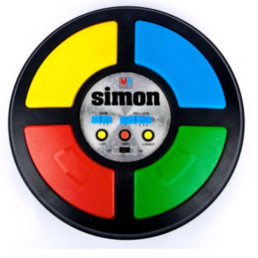
Patterning with Sound
This used to be one of my favorite games as a child. I discovered it at age six. Your child might be too young for this, but you can still pattern with sound using your voice:
beep beep OINK! beep beep OINK!
beep beep OINK! etc…
Or, your body:
Slap your legs once, clap your hands twice, slap your legs once, clap your hands twice, slap your legs once, etc…
You can also use the pans in your kitchen and a wooden spoon! The possibilities are endless!

Patterning by Colour
Use coloured pasta, apples, gummy bears, or Froot Loops cereal!
CEFA Tip: If you are working on colour and your child is just starting, try to keep all the attributes (shape, size) the same.
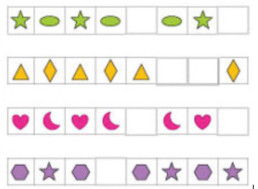
Patterning by Shapes
CEFA Tip: You can cut your own shapes using paper, felt, construction paper or you can print out shapes from the internet and then cut them for your children to sort. If your child can cut them, even better! The internet is full of all kinds of free printable worksheets.

Patterning by Size or Height
CEFA Tip: You can use anything! Try with pebbles from your neighbourhood, shells from the beach, anything that is the same but comes in different sizes.
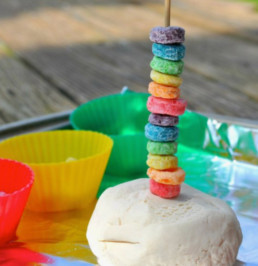
Patterning Towers
These are so much fun! Essentially, they are the same thing as the patterns above, but they are vertical instead of horizontal. You can use Lego bricks (stack them one on top of the other following the pattern you establish), or beads and pipe cleaners or spaghetti!
Patterning Books You Might Like
In order to truly understand these concepts, it is always best for your children to have as many hands-on activities and manipulatives as possible. For patterning, an activity that they can touch, feel and play with is so much better than a worksheet or book.
If your child really has a passion for patterning, or if you need an activity that is educational but does not require as much supervision, then books and workbooks can be fun! Plus, it really depends on your child. Some children love working on workbooks (I was one of them) and can find them entertaining for hours on end, while others prefer real objects. Whatever your child’s preference may be, make sure you always provide manipulatives (rather than only workbooks or activities on paper). Trust me on this one.
A Word of Caution
Although patterning can be a great activity for your child to do alone (once the concept is clear), make sure you always supervise. It can be a choking hazard, depending on the objects you use for patterning. Plus, at this age, children must always be supervised.
